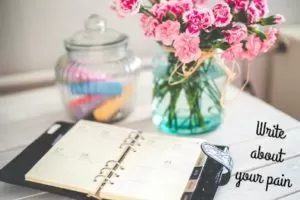Have you ever noticed how your shoulders feel heavy after a stressful day? Or how a nagging backache suddenly appears when life feels overwhelming?
It’s almost like our bodies are talking to us, trying to tell us something we might not even realize ourselves.
Our bodies hold on to emotions, especially pain. But why does this happen, and more importantly, how can we let go?
In this blog, we will explore why pain settles in different parts of the body and what we can do to release it.
Why Does the Body Store Pain?
Your body is a diary that records everything—the good and the bad. When we experience stress, trauma, or even prolonged sadness, our brain doesn’t always process these feelings completely. Instead, the body steps in to help. It’s like tucking away a letter you’re not ready to read. That’s why emotional pain shows up as physical tension or discomfort.
For instance, stress might make you clench your jaw or hunch your shoulders. If these reactions happen often enough, your body “stores” that pain in these areas, creating patterns of tension. Over time, these patterns can lead to chronic pain or stiffness. It’s like your body saying, “Hey, pay attention to this!”
Where Pain Hides and What It Means
Each part of the body can reflect different emotions. Here are some common examples:
- Shoulders: Often called the “weight of the world” spot, tight shoulders usually mean you’ve been carrying too much responsibility or stress.
- Lower Back: This area can store feelings of financial worries or lack of support, making it ache when life feels uncertain.
- Neck: Stiffness here might point to unresolved anger or trouble “seeing” someone else’s perspective.
- Stomach: Ever had a “gut feeling” about something? Your stomach is deeply connected to emotions like fear and anxiety.
- Hands or Feet: Feeling stuck or out of control in life? Pain in these areas might mean you’re longing to take action or move forward.
Recognizing where your pain hides is the first step toward healing. It’s like reading the messages your body has been holding onto.
How to Release Stored Pain
Letting go of pain isn’t always easy. But with patience and the right techniques, you can help your body heal and feel lighter.
Here’s how:
1. Start with Awareness
Pay attention to your body. Where do you feel tension or discomfort right now? Is it your shoulders? Your lower back? Don’t judge or try to fix it just yet—simply notice it. Sometimes, just acknowledging the pain can make a big difference.
2. Breathe It Out
Deep, mindful breathing is one of the easiest ways to release tension. Try this:
- Sit comfortably and close your eyes.
- Inhale deeply, hold your breath for 4 seconds, then exhale slowly for 6 seconds.
- Repeat this for a few minutes, imagining the tension leaving your body with every exhale.
3. Move Your Body
Gentle movements like stretching, yoga, or even a short walk can help release tension. See where you feel discomfort. For example, if your shoulders are tight, roll them gently or stretch your arms. Movement increases blood flow, which helps your body let go of stored emotions.
4. Use Touch Therapy
Sometimes, a simple massage or applying gentle pressure to the sore spot can work wonders. You don’t need to book a fancy spa appointment—even rubbing your own shoulders or feet can help. Heat packs or warm baths can also soothe tense muscles.
5. Journal Your Feelings
Remember that diary analogy? Sometimes, the best way to release stored emotions is to write them out. Jot down how you’re feeling. Don’t overthink it—try journaling prompts & just let the words flow. You may be surprised by what you realize.
6. Talk to Someone
Opening up to a trusted friend, family member, or therapist can help you process the emotions you’ve been holding onto. Join Healing Circle by Jacqueline Kane to have a supportive community when life gets messy. Sometimes, saying things out loud is all it takes to lighten the load.
7. Practice Gratitude
It’s easy to focus on what’s wrong when we’re in pain. But shifting your focus to what’s good can bring balance. Each day, note three things you’re thankful for. Gratitude can be a powerful tool to ease emotional tension.
Your Body Wants to Heal—Help It
The human body is incredibly resilient. It doesn’t want to hold onto pain forever. It’s simply waiting for you to notice, listen, and take steps toward healing. Be forgiving to yourself during this process.
Remember, you’re not alone in this. So many of us are walking around with stored pain, just waiting to be released. By taking small, gentle steps, you can free your body from the weight it’s been carrying and feel more at ease in your own skin.
So, take a deep breath, roll your shoulders back, and remind yourself: you’ve got this. Your body is your ally, and together, you can find relief.





